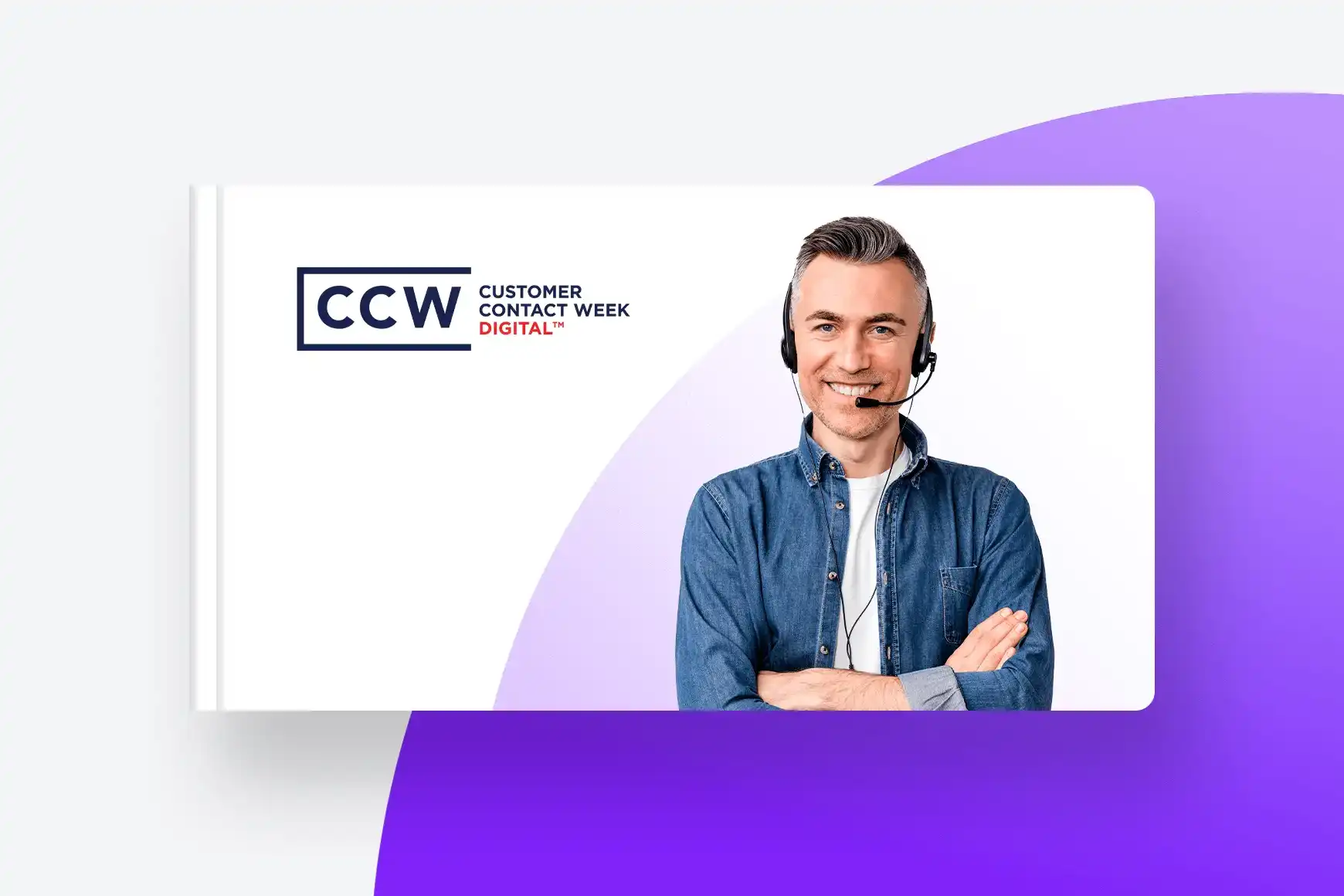10 Tips for Reducing Cost Per Call in the Call Center

By Shauna Geraghty
0 min read

Reducing cost per call in the call center is typically high on the list of priorities of call center managers and executives. However, implementing strategies to reduce cost per call should never come at the expense of customer service quality. Rather, reducing cost per call requires a balancing act between optimizing call center resources, staffing and customer service quality – and doing so as lean as possible.
This blog post describes cost per call as well as 10 tips for reducing cost per call in the call center without sacrificing customer service quality. It is a great resource for managers and executives aiming to reduce cost per call in their call center – the right way.
Cost Per Call Overview
Cost per call (or cost per contact) is a call center metric for the total cost associated with handling all calls or contacts during a specific time period. It is a KPI frequently used by call center managers to assess efficiency within the call center.
Before we dive into how to reduce cost per call in the call center, lets first discuss how to calculate cost per call.
Calculating Cost Per Call
The first step to calculating cost per call in the call center is defining the time period for which you would like to calculate cost per call (i.e., hour, day, month, quarter, year, etc.).
Once you have a concrete time period, it is usually most effective to acquire the number of contacts during that time period per channel:
- Phone
- Video
- Text
- Live chat
- Support tickets
- Fax
- Self-service IVR
Next, calculate the total call center costs associated with the given time period. Consider including the cost of salaries for all agents who interacted with customers on any channel, operational costs (i.e., rent, management, etc.) as well as the costs associated with call center software, business tools and telephony for the specified time period.
Finally, divide the total cost for the time period by the total number of calls (or contacts) handled in that time period. This is the total cost per call.
Reducing Cost per Call
Now that you have a comprehensive understanding about how to calculate cost per call and what factors influence cost per call, lets dive into tips for reducing cost per call without sacrificing customer service quality. The following are ten tips for reducing cost per call in the call center:
1. Optimize hiring, training and coaching of agents
One of the best ways to decrease cost per call and increase customer service quality is by ensuring that your agents have sufficient knowledge, training and resources to adequately address the customer’s needs. You can accomplish this by hiring agents who are well-suited for the position, training them to excel and providing consistent feedback and coaching based on their performance. Having a team of excellent call center agents will help to improve first call resolution, decrease handle time and increase customer service quality (which reduces the number of escalated calls to management and callbacks about the same issue) – all of which contribute to decreasing cost per call.
2. Utilize call monitoring
Maintaining an excellent team of call center agents in an effort to reduce cost per call in the call center requires more than a set-it-and-forget-it approach. Call center managers should engage in call monitoring of live calls to assess their performance. They should also do so in a standardized fashion and consistently in order to ensure that call center agents are both efficient and effective. Making sure your team of agents are providing top-notch service to their customers is essential for reducing cost per call – and call monitoring is the best tool to accomplish this in the call center.
3. Utilize integrated call center software
Employing a team of high-performing call center agents who don’t use the most progressive call center software is like owning a Ferrari with bald tires. If you expect your team to perform optimally, you have to give them the tools to do so. That’s where integrated call center software comes in. Call center software that integrates with business tools like Salesforce, Zendesk, LiveChat, Shopify, Magento and others to compile comprehensive information about the caller will enable call center agents to better meet the needs of their callers – faster. With all relevant information such as call logs, chat transcripts, Zendesk tickets and Salesforce cases all presented in the same interface, agents won’t have to go digging through multiple systems to find the information they need the most. With the ability to open, close and edit tickets and cases in integrated business tools from the call center software interface, agents will spend less time on the phone updating systems with relevant information and more time doing what they do best. If you had to make one single investment to improve cost per call – integrated call center software would be it.
4. Optimize the business tools that agents utilize for interacting with customers
In addition to integrated call center software, leveraging the best call center software features to enhance agent performance will also go a long way to decreasing cost per call. According to Cisco, call centers reduced cost per call by as much as 35% by leveraging computer telephony integration (CTI). This is likely because CTI increases their proficiency at meeting the caller’s needs and eliminates inefficient workflow as the phone dial pad is right where it should be – next to the caller’s data. Another benefit of CTI is that it expedites the caller verification process which according to Bank of America eats up about 25% of the time call center agents are on the phone with callers. With CTI and other helpful call center software features, agents will spend less time on the phone with the caller verifying their identity and going back and forth between their phone and customer data. The end result? Decreased handle time, increased customer service quality and lower cost per call.
5. Utilize callback from queue
In addition to equipping your agents with the most effective call center software solution, you must also make sure that your team utilizes call center software features that will have a direct impact on reducing cost per call. Callback from queue is one of those features. According to Forrester, 72% of people surveyed stated that they would like the option for a callback from queue when calling a company. The beauty about this feature is not only does it improve customer satisfaction, it also reduces cost per call as it decreases the number of callers waiting in a queue thus telephony, trunk costs and staffing all decrease.

REPORT
2023 Market Study: CX Trends, Challenges, & Opportunities
Stay ahead of the competition by downloading the CCW Digital Market Study. Learn from industry insights and turn challenges into opportunities for a customer-centric revolution.
6. Leverage skills-based routing
One of the best ways to increase cost per call and decrease customer satisfaction is by transferring callers from agent to agent until they come across one that can adequately meet their needs. This painful process can be thrown out the window with skills-based routing. Skills-based routing ensures that callers are routed to the most appropriate agent to meet their needs from the get-go. It routes calls based on complex algorithms that take into consideration the caller’s location, contact history with the company, dialed phone number and demographic information. It then matches the caller with the agent based on the agent’s availability, department, skill, specialized training, spoken language – basically any construct that is meaningful to the company. Thus, skills-based routing ensures that callers are routed directly to the agent who is most qualified to meet their needs thereby increasing customer satisfaction, reducing handle time and reducing cost per call.
7. Leverage self-service options
An excellent way to reduce cost per call is to reduce inbound call volume. This again will reduce costs associated with telephony and staffing and as a result reduce cost per call. How can you accomplish this without compromising service quality? By allowing customers to help themselves. There are plenty of customers who don’t want to talk with an agent – in fact – many downright don’t like it. These customers will jump at the opportunity to help themselves. Providing them with self-service options like informative hold messages, knowledge base, self-service IVR, how-to blog posts and ebooks will significantly reduce inbound call volume without compromising service quality.
8. Improve scheduling, schedule adherence and occupancy rates
Improving scheduling and adherence to the schedule can significantly reduce staffing costs and as a result, cost per call. Some basic tips to help optimize scheduling, adherence and occupancy rates are to leverage workforce management software, inform agents about the importance of adherence, provide consistent feedback to agents about their degree of adherence and reward the agents who are most adherent. Using these tools and techniques to help optimize adherence and occupancy will also go a long way to decreasing cost per call.
9. Hire remote agents
Staffing your call center with remote on-call agents and/or co-sourcing to handle overflow call volume can significantly decrease staffing and infrastructure costs, thus decrease cost per call. You can hire remote call center agents to field calls during peak periods, co-source a segment of your call center operations to a more cost-effective provider and allow your in-house staff the option to work from home. All will significantly reduce operational costs and cost per call, without compromising service quality.
10. Optimize first call resolution
Some call center experts argue that attention and resources should not be devoted to reducing cost per call but rather cost per call resolution. This is because there can be a considerable cost accrued for callers who call back about the same issue. Thus, optimizing first call resolution will significantly decrease cost per call in the call center. Optimizing first call resolution involves empowering frontline agents with the knowledge and capabilities to resolve the majority of issues that they may come across, utilizing integrated call center software so agents have access to comprehensive caller history and leveraging skills-based routing so the most appropriate agent is routed the call. Optimizing first call resolution will decrease call volume, operational costs and cost per call in the call center.
Reducing cost per call in the call center is usually on the radar of call center managers, however many don’t know how to execute without sacrificing service quality. Following the 10 aforementioned tips, tools and techniques will put you well on your way to reducing cost per call in the call center all while increasing service quality. It’s a win-win.

FAQs
What is the average cost per call in contact centers?
According to research firm F. Curtis Barry & Company, the average cost per call in contact centers can range from $3-6. Cost per call can vary greatly depending on a variety of factors such as direct labor costs, how large your organization is, and the number of agents you have.
What are the benefits of contact center cost reduction?
Reducing costs in a contact center provides many benefits. It directly bolsters profitability by optimizing expenses while maintaining service quality. Streamlining processes enhances operational efficiency, allowing for better resource utilization and minimized waste. This strategic allocation of resources fosters adaptability, ensuring sustainable operations that can evolve with changing business landscapes. Additionally, the savings from cost reduction initiatives create opportunitites for investments in technology, agent training, and customer-centric improvements, contributing to long-term growth and competitiveness.
What are the operational costs of a contact center?
The operational costs of a contact center include the significant outlay for employee wages, bonuses, and benefits across various roles within the center. Technology and infrastructure expenses cover software, hardware, telephony systems, and network infrastructure. Additionally, facility costs for rent, utilities, and maintenance of the contact center space are accounted for, alongside training programs, telecommunication charges, and supplies. Outsourced services or vendor fees, compliance and regulatory expenses, and miscellaneous operational needs also contribute to the overall operational expenditure of a contact center. Managing and optimizing these costs are pivotal in ensuring efficient operations and financial stability in contact centers.





